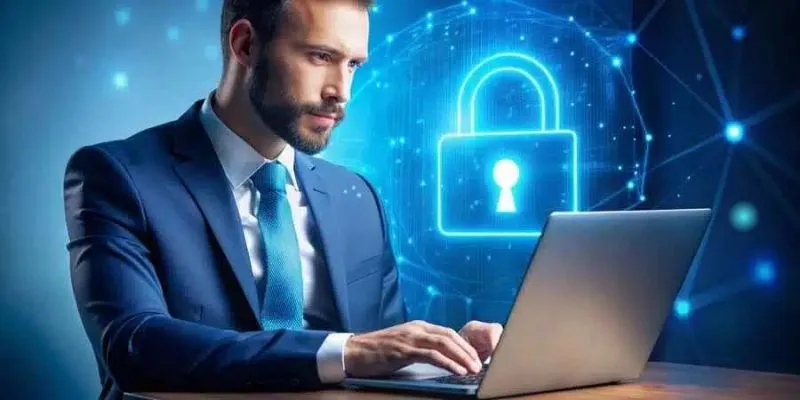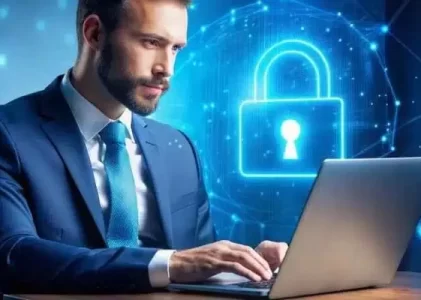In today’s digital world, security is a top priority. With cyber threats evolving daily, relying on just a username and password to protect your accounts is no longer enough. This is where Multi-Factor Authentication (MFA) comes into play. MFA adds an extra layer of security, ensuring that even if hackers get hold of your password, they can’t easily access your accounts. Enrolling in a Cyber Security Course in Chennai can be a great step if you want to deepen your understanding of cybersecurity and learn how to protect digital assets. This course will equip you with the skills to combat cyber threats and implement advanced security measures effectively. This Blog is about How Does Multi-Factor Authentication Improve Security?
What Is Multi-Factor Authentication (MFA)?
Before we dive into the benefits, let’s first understand what MFA is. Multi-Factor Authentication is a security measure that requires users to verify their identity using more than one method. Instead of just entering a password, you’ll also need to confirm your identity through another factor, such as a fingerprint, a security code sent to your phone, or a physical security key.
MFA typically involves three categories of authentication factors:
-
Something You Know – A password, PIN, or security question.
-
Something You Have – A smartphone, security token, or smart card.
-
Something You Are – Biometrics like fingerprints, facial recognition, or voice patterns.
By combining two or more of these factors, MFA significantly enhances account security and reduces the risk of unauthorized access.
Why Passwords Alone Aren’t Enough
Many people assume that a strong password is enough to keep hackers away. To gain in-depth knowledge of cybersecurity best practices and threat prevention, enrolling in a Cyber Security Course in Bangalore can be a valuable step. This course will help you understand network security, ethical hacking, and risk management to protect digital systems effectively. However, cybercriminals have become increasingly sophisticated, using methods like:
-
Phishing attacks – Tricking users into revealing their login credentials.
-
Brute-force attacks – Using automated tools to guess passwords.
-
Credential stuffing – Using leaked passwords from data breaches to access multiple accounts.
Even if you create a strong password, it can still be compromised. This is where MFA makes a difference, adding another layer of security that prevents hackers from accessing your accounts, even if they have your password.
How Multi-Factor Authentication Enhances Security
1. Prevents Unauthorized Access
One of the biggest advantages of MFA is that it prevents unauthorized access to your accounts. Even if a hacker steals your password, they still need the second authentication factor—whether it’s a one-time password (OTP) sent to your phone or biometric authentication. This significantly reduces the chances of a cybercriminal breaking into your account.
2. Mitigates the Risks of Phishing Attacks
Phishing attacks are a major concern, especially in businesses where employees might unknowingly enter their credentials on fake websites. MFA helps counter phishing threats by requiring additional verification. Even if a hacker gets your login details, they can’t complete the authentication process without the second factor. To gain deeper insights into cybersecurity and learn how to prevent such attacks, enrolling in an Ethical Hacking Course in Chennai can be a great choice. This course will teach you how hackers operate, enabling you to implement stronger security measures and protect sensitive data effectively.
3. Protects Against Credential Stuffing
Many people reuse passwords across multiple sites, which is a serious security risk. If one of your accounts is compromised in a data breach, hackers might try using the same credentials on other platforms. With MFA enabled, even if your password is exposed, your accounts remain protected because hackers won’t have access to the second authentication factor.
4. Enhances Security for Remote Work
With remote work becoming the norm, employees log in to company systems from various locations and devices. This increases the risk of cyber threats. MFA ensures that only authorized personnel can access corporate networks, protecting sensitive company data from unauthorized access.
5. Strengthens Cloud Security
As businesses shift to cloud-based services, securing these platforms is crucial. MFA adds an extra security layer to cloud applications, preventing cybercriminals from gaining access to confidential information stored on platforms like Google Workspace, Microsoft 365, and Dropbox. To further enhance your cybersecurity expertise and learn proactive defense strategies, enrolling in an Ethical Hacking Course in Bangalore can be a great step. This course will equip you with the skills to identify vulnerabilities, perform penetration testing, and protect cloud environments from potential threats.
6. Reduces the Impact of Data Breaches
Data breaches are common, and when companies are hacked, user credentials are often leaked. If MFA is in place, attackers won’t be able to use stolen passwords alone to access accounts, minimizing the damage caused by data breaches.
7. Complies with Security Regulations
Many industries and government agencies now require MFA as part of their cybersecurity regulations. Implementing MFA ensures compliance with security standards such as:
-
GDPR (General Data Protection Regulation)
-
PCI-DSS (Payment Card Industry Data Security Standard)
-
NIST (National Institute of Standards and Technology)
By adopting MFA, businesses can avoid legal and financial penalties while keeping their systems secure.
Common Multi-Factor Authentication Methods
There are several types of MFA methods, each offering different levels of security and convenience. Choosing the right MFA method is essential to balancing protection and user experience. Implementing Best Cyber Security Practices—such as using strong authentication methods, regularly updating passwords, and enabling MFA—can significantly enhance overall security and protect sensitive data from cyber threats.
-
One-Time Passwords (OTPs) – Codes sent via SMS, email, or authentication apps like Google Authenticator.
-
Biometric Authentication – Fingerprints, facial recognition, or iris scanning.
-
Push Notifications – Approval requests sent to mobile devices for login confirmation.
-
Security Tokens – Physical USB keys or smart cards that store authentication data.
-
Behavioral Biometrics – Advanced security methods analyzing typing patterns, mouse movements, or speech recognition.
How to Implement Multi-Factor Authentication
For Personal Accounts:
-
Enable MFA on email, social media, and banking accounts.
-
Use authentication apps like Microsoft Authenticator or Authy.
-
Avoid SMS-based authentication when possible, as SIM-swapping attacks can compromise phone numbers.
For Businesses:
-
Require MFA for employees accessing company networks and applications.
-
Implement single sign-on (SSO) solutions combined with MFA.
-
Educate employees about phishing and secure authentication practices.
Multi-Factor Authentication is no longer an option—it’s a necessity in today’s digital landscape. By requiring additional verification steps beyond just a password, MFA significantly strengthens account security, protects sensitive information, and minimizes the risk of cyber threats. Additionally, Blockchain Technology enhances Cyber Security by providing decentralized, tamper-proof data storage, reducing the risk of data breaches, and ensuring secure transactions across digital platforms.
Whether you’re securing personal accounts or implementing MFA in a business environment, this extra layer of protection is a simple yet powerful way to enhance security. Stay safe online and take advantage of MFA to keep cybercriminals at bay!
Comments
0 comments

